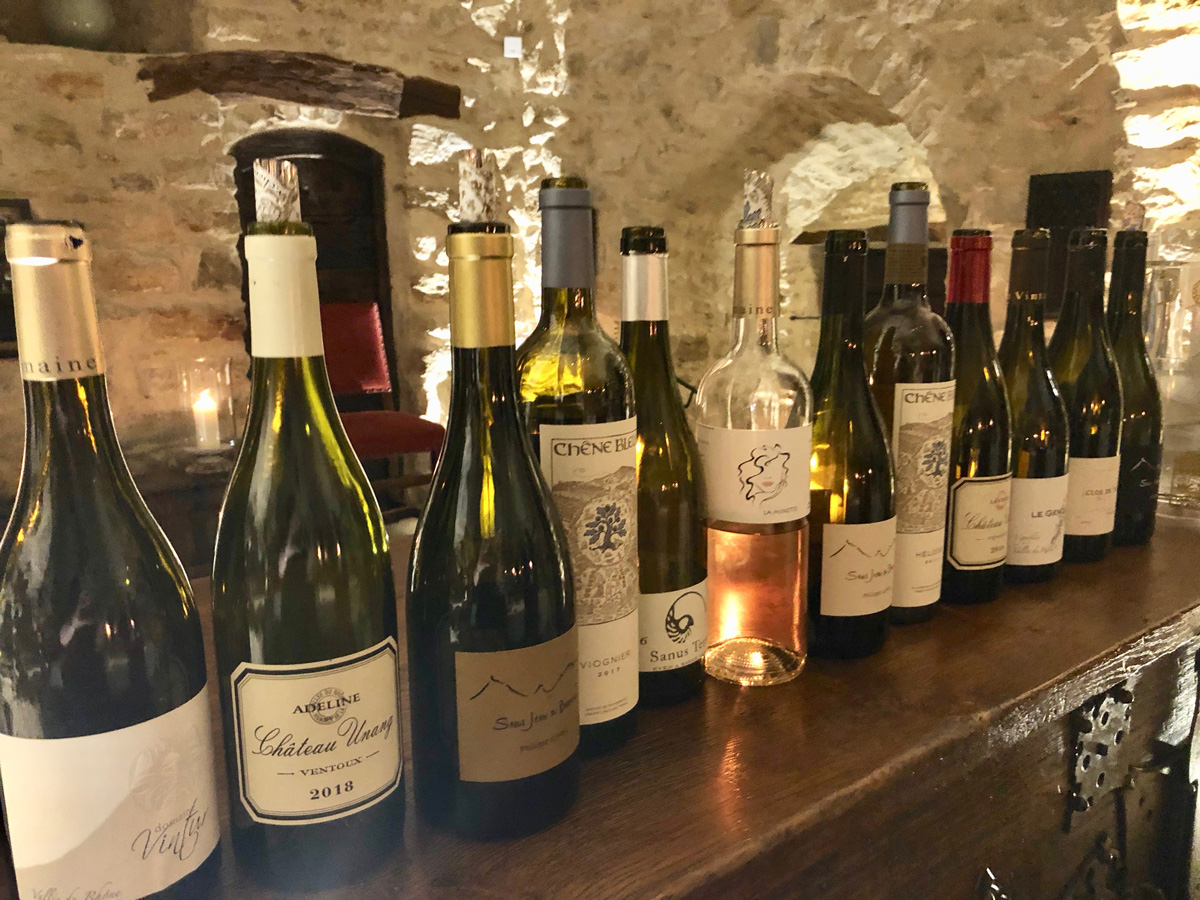
Wine Culture Magazine

The wind-swept peak of Mont Ventoux towers over the wine region that bears its name. Getty Images/ RolfSt photo
Mont Ventoux is the most famous landmark in this part of southeastern France, a high, wind-swept cone that both towers above and stands apart from its neighbouring mountains. “Le géant de Provence” is best known as a particularly gruelling section of the annual Tour de France bicycle race. It is not, however, known as a great wine region. At least, not yet.
“It was the ugly stepchild of the Rhône,” says Even Bakke, owner of the organic Ventoux winery Clos de Trias. “It was always the source of picnic wines.”
But now, some 2,000 years after the Romans first planted vines here, and nearly 50 years after the official Côtes de Ventoux appellation was created, that is about to change. Although some 82 per cent of Ventoux wine is still in the heavy hands of the co-operatives, a growing number of winemakers—most of them from elsewhere—are discovering that the region’s wind-swept altitudes and uncompromising soils can produce wines of the highest quality.

Chêne Bleu, a medieval property in a UNESCO Biosphere Reserve at Mont Ventoux, is gaining renown for its velvety Heloïse and Abelard red blends. Joanne Sasvari photo
Last October, a handful of those Ventoux vintners gathered in the ancient dining room at Chêne Bleu, a property that dates back to the ninth century and has been owned since 1993 by Xavier and Nicole Rolet. They’ve since become famous for producing lush, elegantly structured red blends considered “super Rhônes.”
Aside from Bakke, who hails most recently from California, there’s James King from Scotland, James Wood from London and Philippe Gimel from Lorraine, a French region better known for cool-climate Pinot Gris than sun-soaked Syrah. Even our host, Danielle Rolet, is channeling the drive of her American stepmother Nicole.
“The region is changing because of all the non-locals who are coming with all their new ideas,” says Gimel, who owns Saint Jean du Barroux, one of the few high-quality Ventoux labels that occasionally makes it to B.C. And they’ve only just begun exploring what the region has to offer. “It’s not only a few people. It could be many people doing well and succeeding.”
“I don’t understand the tradition, so I can do what I feel needs to be done,” says Wood, the owner of Domaine Vintur.
“It’s not that the locals don’t make good wines or can’t make good wines,” says Bakke. “They’re just a little downtrodden.”
Ventoux, the winemakers say, has everything going for it: soil, altitude and the coolest climate in the Southern Rhône. Mind you, a few years ago, these would all have been considered liabilities.
It’s very much a geological cocktail. There’s such an interesting, eclectic mix of soil geology.
“I think the Ventoux as an appellation is so interesting, so forward thinking,” says Rolet. “It’s very much a geological cocktail. There’s such an interesting, eclectic mix of soil geology.”
Three geological ages collide here, the oldest dating back 150 million years to the Jurassic era, when this was a seabed. Today the soil is a rugged lacework of alluvial sand, silt, limestone and mineral-rich schist, covered by stone-riddled clay and chalk that, in the vineyard, force roots to dig deep for water and nutrients.
“The geology is so amazing that if you want to do something, you can do it right away,” Gimel says. “It’s just revealing something that was already there.”
But it’s not just the soil that’s amazing; it’s the altitude. While some of the highest heats on record have turned wine from the valley below into jammy fruit bombs, high-elevation Ventoux wines remain crisp and fresh.
Vineyards are planted up to 600 metres, among the highest in France. Days are hot and nights are cool, allowing the grapes—chewy Rhône reds such as Grenache, Syrah, Mourvèdre and Cinsault and lush whites like Viognier and Roussanne—to ripen slowly, developing intense flavour while retaining acidity.
What Ventoux wines have going for them is “concentration, not weight,” says King, owner with his wife Joanna of Château Unang. “The change has been dramatic in the last five years, but there’s a lot more to be done.”
In Ventoux, it’s our time to shine—if we were in Spain, we’d be Priorat.
“In Ventoux, it’s our time to shine—if we were in Spain, we’d be Priorat,” says Bakke. “The potential here is limitless.”

A lineup of wines from ex-pats who’ve relocated to Ventoux, on display in the Chêne Bleu dining room. Joanne Sasvari photo
A few months after the gathering at Chêne Bleu, Frédéric Chaudière, co-owner of Château Pesquié, was pouring his wines at the Vancouver International Wine Festival. Although the Ventoux winery has been in the family for 50 years, it has only recently been seeing the kind of 95-point-plus ratings typical of nearby
Châteauneuf-du-Pape or Gigondas.
“The reputation of Ventoux has changed,” Chaudière says. “I think people are not afraid to say, ‘This is amazing.’ There’s a clear recognition that was unthinkable 10 years ago. What was once challenging has become a great advantage.”
Or as Gimel says, simply: “It’s the most exciting appellation in France.”
Mont Ventoux is located in the Vaucluse region of France, some 20 kilometres northeast of Carpentras. It stands 1,909 metres tall at its peak and, although geologically part of the Alps, it is considered to be separate as it stands alone to the north of the Luberon range and east of the Dentelles de Montmirail. The top of the mountain is bare limestone, swept by winds that blow at more than 90 kilometres an hour for eight months of the year and can reach 320 kilometres an hour during the mistral.
Pesquié Terrasses 2017 Red Blend
(Ventoux, $19.99) Layered ripe wild berries, wildflowers, spice, minerality.
La Vielle Ferme Red Blend
(Ventoux, $12.99) Rich red and black fruit, soft spice, velvet, terrific value.
Rémy Febras Ventoux Rouge
(Ventoux, $22.55) Cherry, currant, silk, complex, fresh.

Joanne Sasvari is editor of Vitis and The Alchemist magazines. She also writes about food and drink for WestJet and Vancouver Sun, and is author of the Wickaninnish and Vancouver Eats cookbooks.

Joanne Sasvari is editor of Vitis and The Alchemist magazines. She also writes about food and drink for WestJet and Vancouver Sun, and is author of the Wickaninnish and Vancouver Eats cookbooks.
@ Vitis Magazine